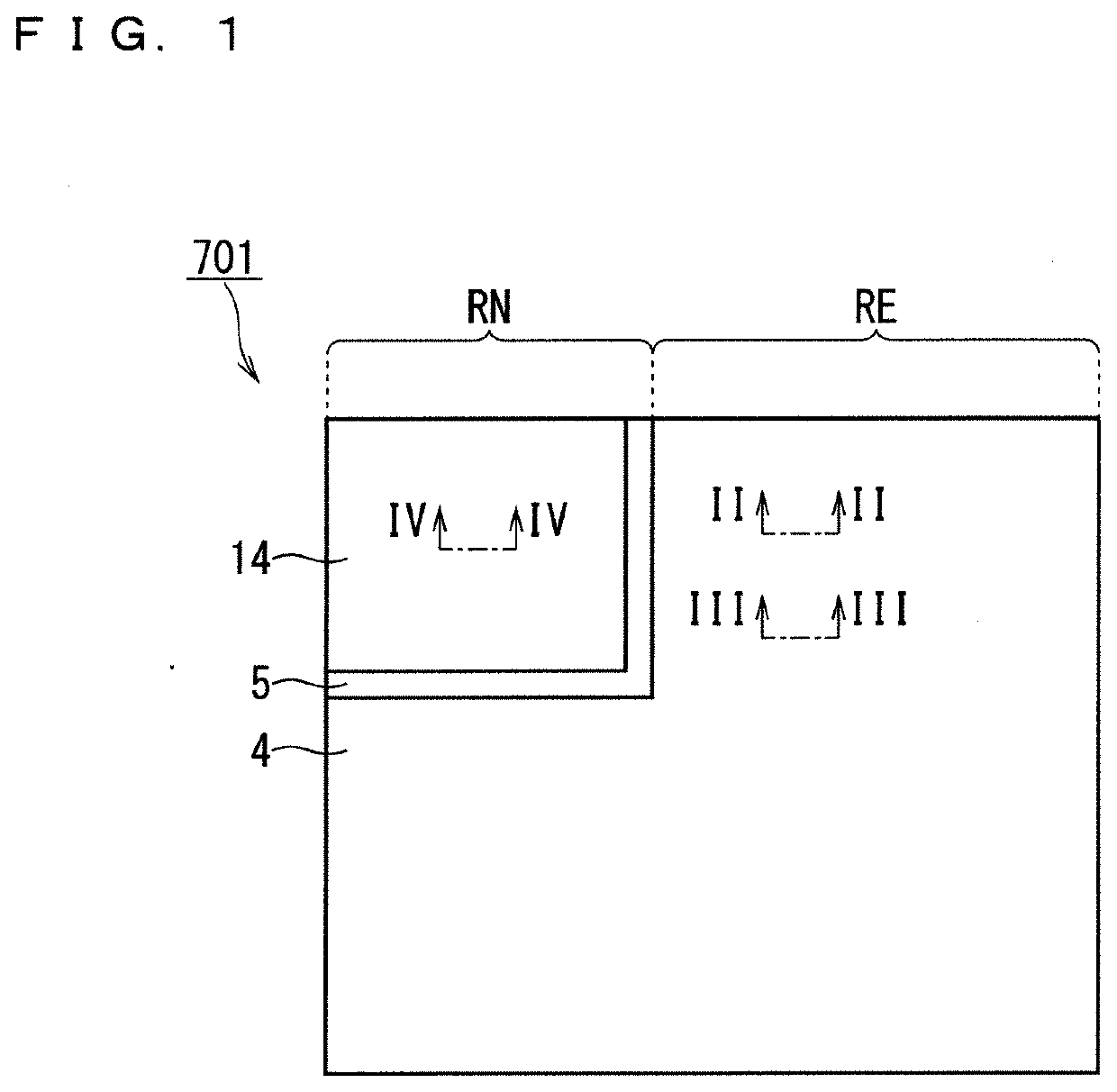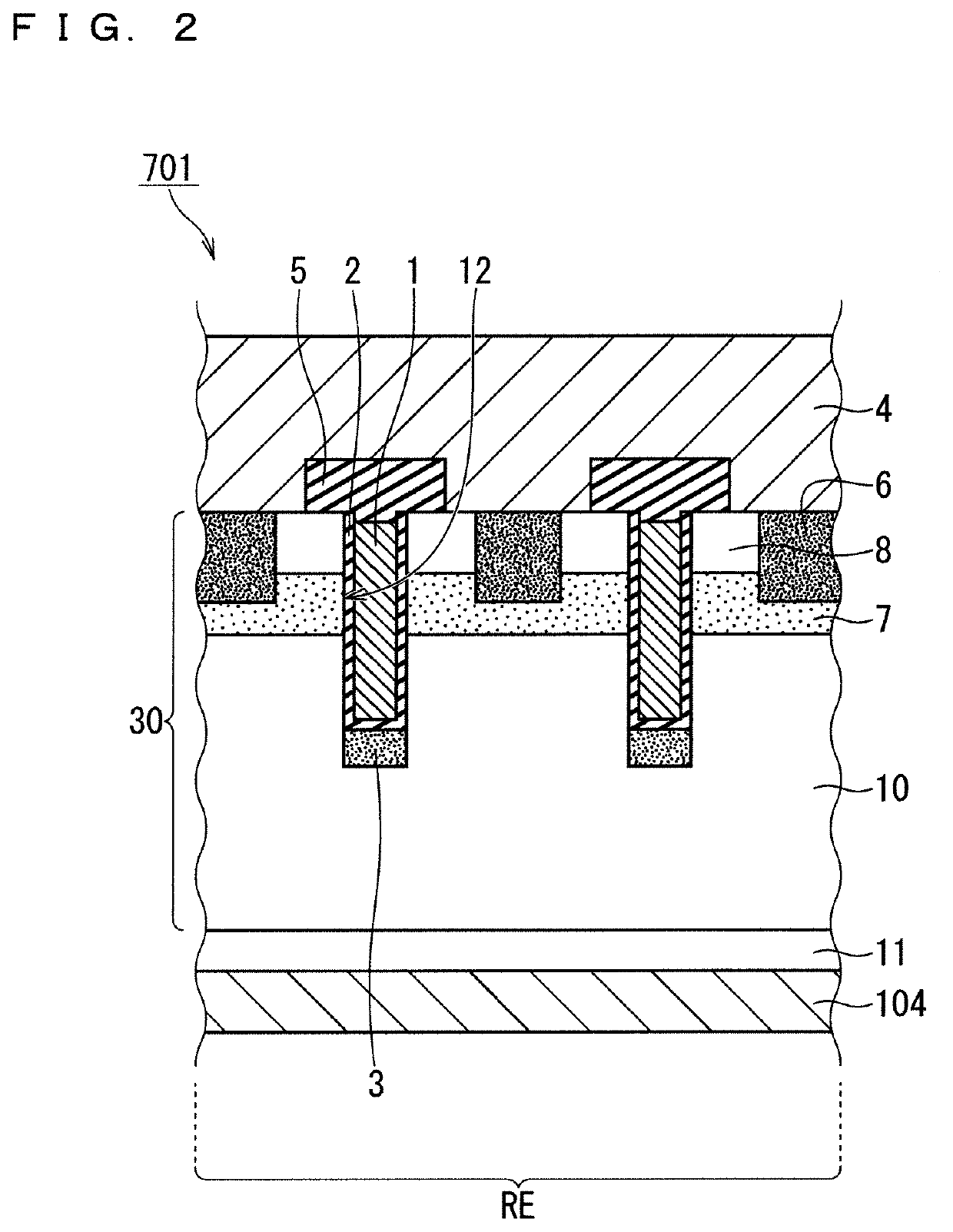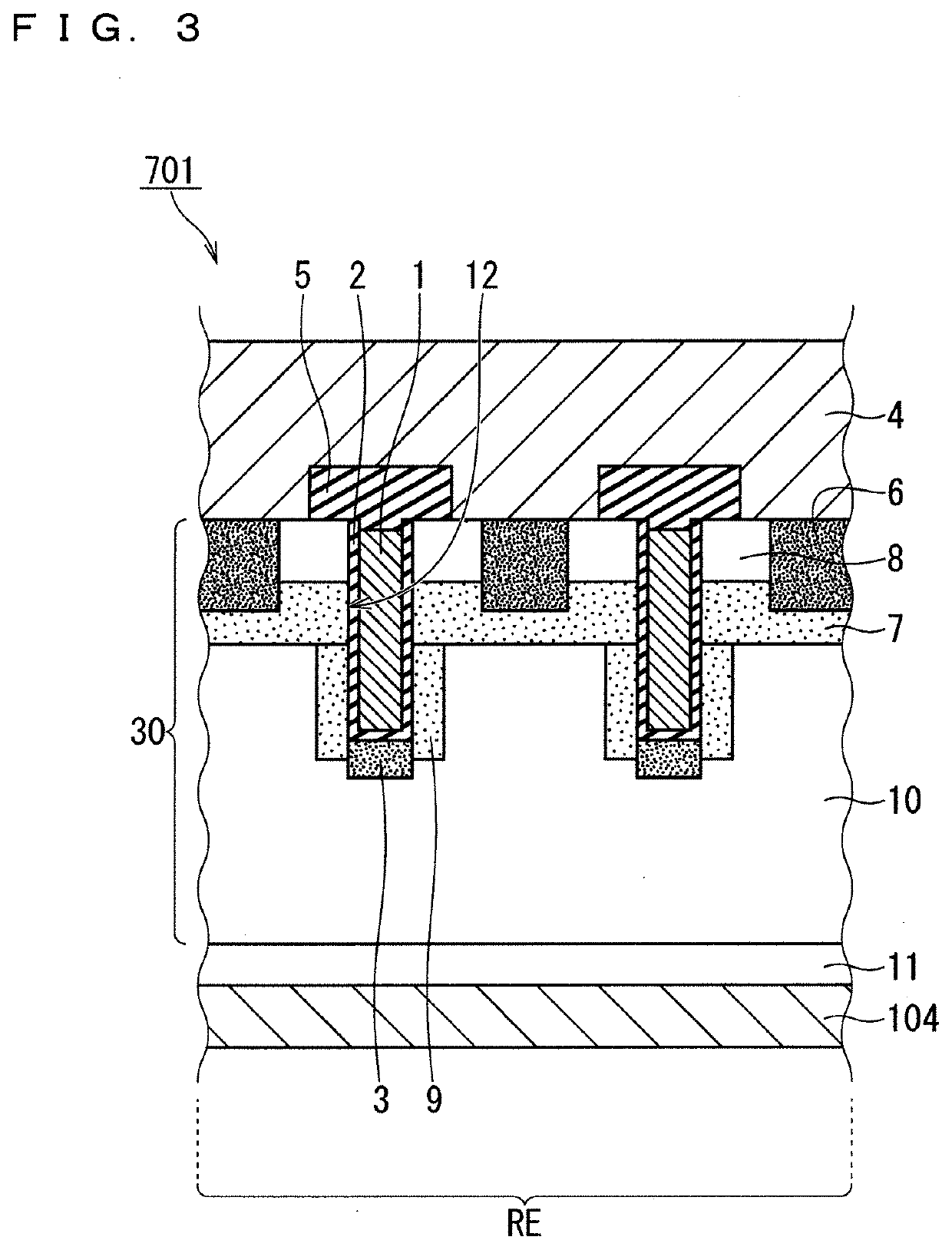Silicon carbide semiconductor device
- Summary
- Abstract
- Description
- Claims
- Application Information
AI Technical Summary
Benefits of technology
Problems solved by technology
Method used
Image
Examples
first embodiment
[0036](Configuration)
[0037]FIG. 1 is a plan view schematically illustrating a configuration of a MOSFET 701 (silicon carbide semiconductor device) according to the first embodiment. The MOSFET 701 includes an element region RE provided on a substrate 11 (silicon carbide semiconductor substrate) and a non-element region RN provided outside the element region RE. In the MOSFET 701, a gate pad electrode 14 connected to the outside and supplied with a gate voltage from the outside is disposed in the non-element region RN. A wire made of metal such as aluminum is connected to the gate pad electrode 14 by means of ultrasonic joining or the like. The non-element region RN may include a termination region of the MOSFET 701. The element region RE includes a region in which channels controlled by gate electrodes are disposed, and typically is a region in which a MOSFET cell that actually functions as a MOSFET is disposed.
[0038]FIG. 2 and FIG. 3 schematically illustrate different partial cross...
second embodiment
[0063]FIG. 7 is a plan view schematically illustrating a configuration of a MOSFET 702 (silicon carbide semiconductor device) according to the second embodiment. In plan view, the MOSFET 702 includes a contact region RC between the element region RE and the non-element region RN.
[0064]FIG. 8 is a schematic partial cross-sectional view taken along the line VIII-VIII of FIG. 7. In the contact region RC, a drift layer 10 having the n type (first conductivity type) provided on the substrate 11, a third trench 212 whose bottom surface reaches the drift layer 10, and a third relaxation region 203 are provided. In the present embodiment, the third trench 212 is provided in the epitaxial layer 30 in at least a part of the contact region RC. The third trench 212 includes a side surface and a bottom surface. The third trench 212 may have depth the same as the depth of the first trench 12.
[0065]The MOSFET 702 includes a third relaxation region 203 disposed in the contact region RC. Specificall...
third embodiment
[0072]FIG. 9 is a partial cross-sectional view of a configuration of a MOSFET 703 (silicon carbide semiconductor device) according to the third embodiment, which is illustrated in a cross-section similar to that taken along the line VIII-VIII of FIG. 7. In plan view (see FIG. 7), between the element region RE and the non-element region RN, the MOSFET 703 includes a contact region RC in which a part of the low-resistance region 101 (FIG. 9) is disposed. In the configuration of FIG. 9, the low-resistance region 101 has a part disposed in the third trench 212 that is provided in the contact region RC, and this part is connected to a part of the low-resistance region 101 disposed in the second trench 112. In the contact region RC, the low-resistance region 101 and the source pad electrode 4 are electrically connected. In order to achieve this electrical connection, typically, in the contact region RC, the source pad electrode 4 includes a contact 216 that extends in the inter-layer insu...
PUM
 Login to View More
Login to View More Abstract
Description
Claims
Application Information
 Login to View More
Login to View More - R&D
- Intellectual Property
- Life Sciences
- Materials
- Tech Scout
- Unparalleled Data Quality
- Higher Quality Content
- 60% Fewer Hallucinations
Browse by: Latest US Patents, China's latest patents, Technical Efficacy Thesaurus, Application Domain, Technology Topic, Popular Technical Reports.
© 2025 PatSnap. All rights reserved.Legal|Privacy policy|Modern Slavery Act Transparency Statement|Sitemap|About US| Contact US: help@patsnap.com



